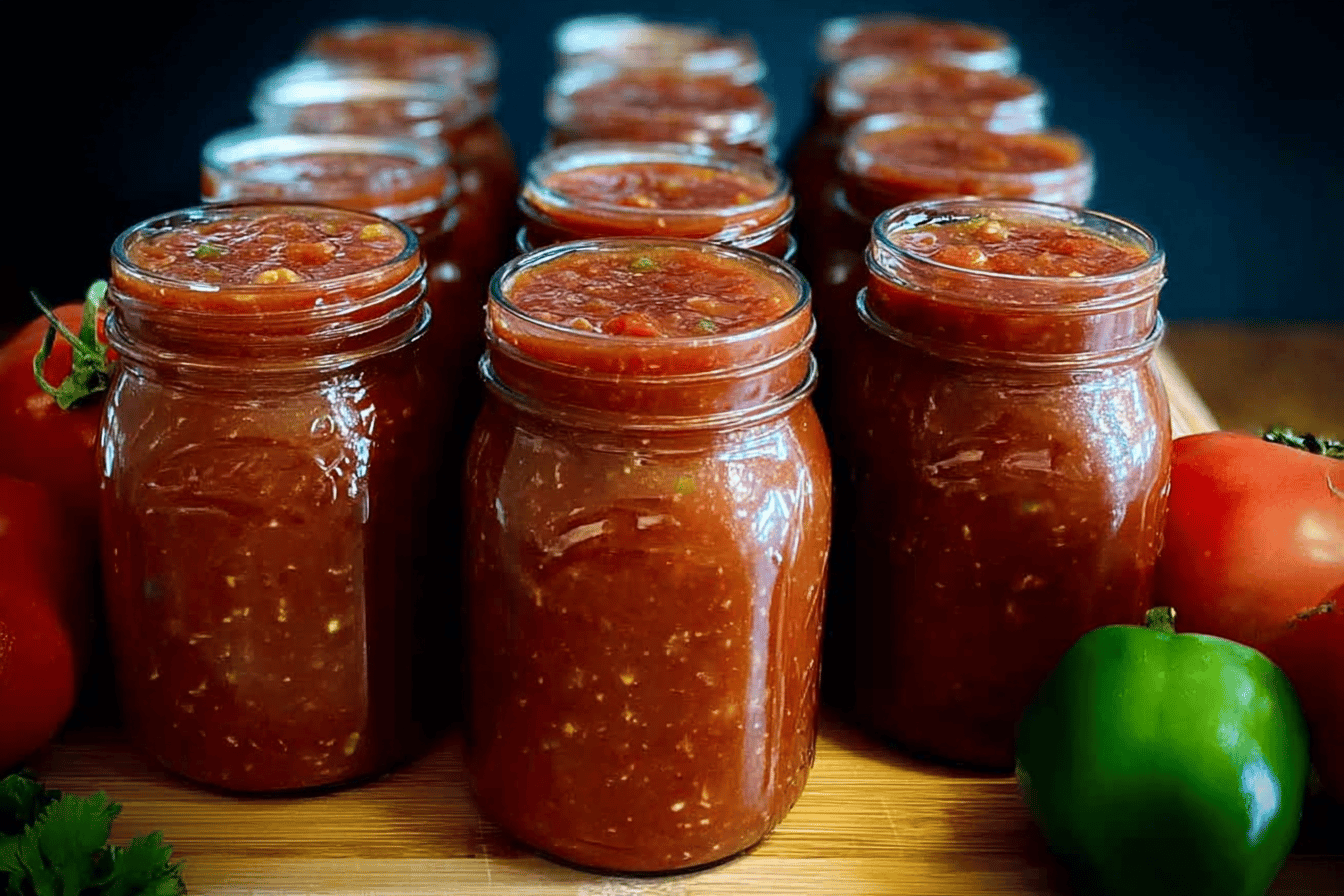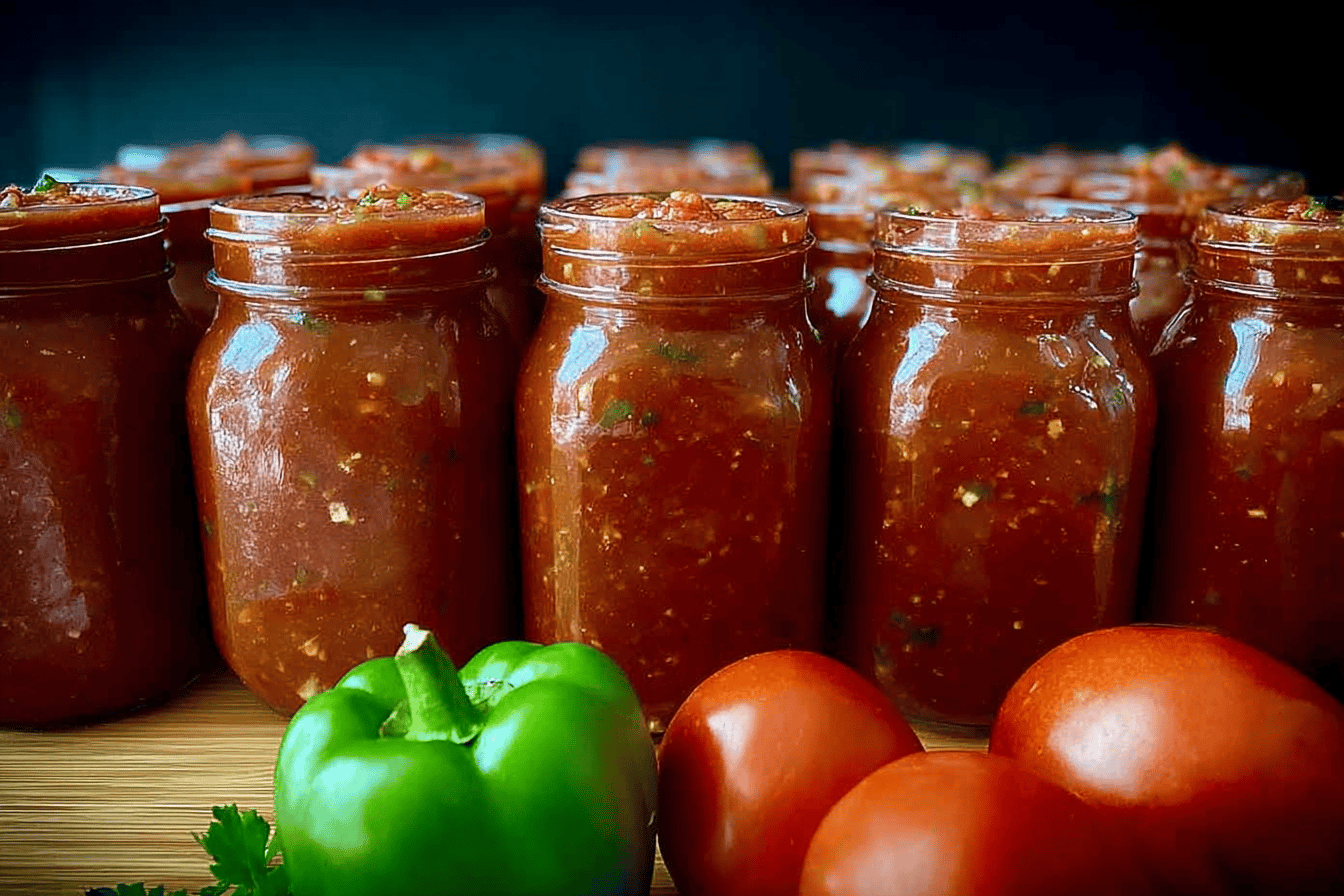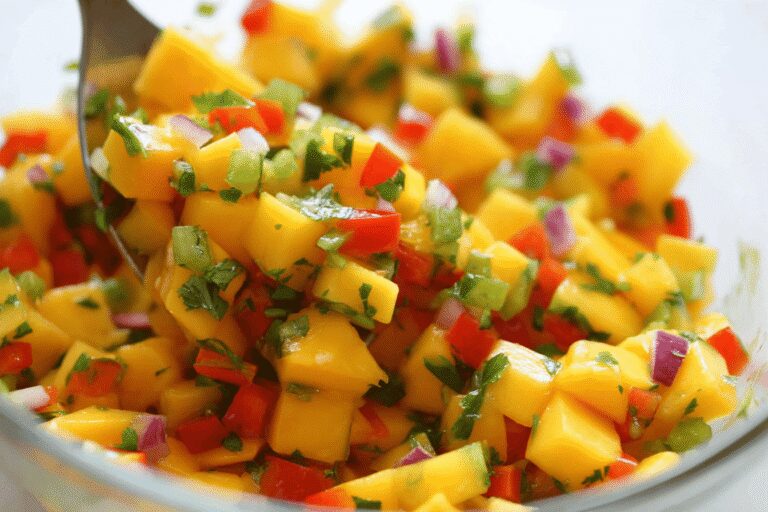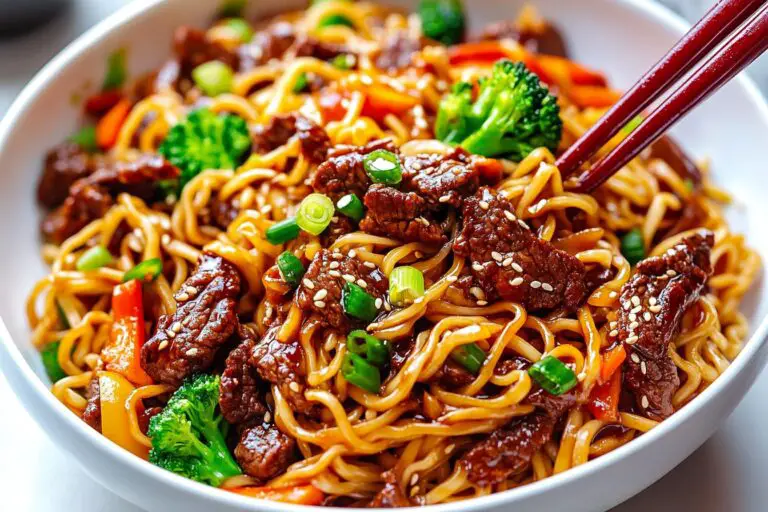Homemade Salsa for Canning
Introduction
Looking for the perfect homemade salsa recipe for canning? Winding Creek Ranch offers a simple and flavorful recipe that will help you preserve the fresh taste of garden produce. Whether you’re a seasoned canner or a beginner, this recipe is packed with bright, zesty flavors that are great for enjoying all year round. With this guide, you’ll learn how to safely prep, cook, and store your salsa while savoring its delicious taste.
Detailed Ingredients with Measures
Fresh tomatoes
6 pounds, peeled and diced
Green bell peppers
2 cups, finely chopped
Onions
2 cups, diced
Jalapeño peppers
½ cup, finely chopped (adjust based on heat preference)
Vinegar
1 cup (5% acidity)
Tomato paste
12 ounces
Garlic
4 cloves, minced
Cilantro
½ cup, finely chopped
Sugar
1 tablespoon
Salt
1½ teaspoons
Ground cumin
1 teaspoon
Ground black pepper
½ teaspoon
Prep Time
One of the secrets to this recipe’s success is the preparation. Set aside around 30 minutes to wash, peel, and dice all the fresh veggies. This ensures that your salsa will have the perfect balance of texture and flavor. Make sure you sanitize the jars you’ll be using for canning, as proper sterilization is essential to achieving safe and long-lasting storage.
Cook Time, Total Time, Yield
The cook time for this salsa is approximately 1 hour. By simmering the ingredients together, the flavors meld beautifully, creating a robust and delicious salsa. When combined with the prep time, the total time needed for this recipe is around 1 hour and 30 minutes. This recipe yields about 7 to 8 pint-sized jars, making it perfect for stocking up your pantry or gifting to friends and family.
This homemade salsa is an excellent addition to your canning repertoire. Its bright, fresh flavors will keep your meals exciting, whether you’re using it as a dip for chips, a topping for tacos, or an accompaniment for your favorite dishes. Enjoy the satisfaction of creating your own preserved food with this easy-to-follow and rewarding recipe!
Detailed Directions and Instructions
Step 1: Prepare the Tomatoes
Blanch fresh tomatoes in boiling water for about 30-60 seconds, until skins start to split. Immediately transfer them into an ice water bath. Peel the skins off, core the tomatoes, and chop them into small pieces. Set aside.
Step 2: Prepare the Vegetables
Wash and chop the onions, bell peppers, and jalapeños. If you prefer less heat, remove the seeds and membranes from the jalapeños. You can use a food processor to finely chop the vegetables for a smoother salsa or chop by hand for a chunkier texture.
Step 3: Combine Ingredients
Place the chopped tomatoes, onions, bell peppers, jalapeños, minced garlic, fresh cilantro (optional), apple cider vinegar, and tomato paste into a large stockpot. Add the spices, including ground cumin, salt, and black pepper. Stir all the ingredients together to combine evenly.
Step 4: Cook the Salsa
Place the stockpot on the stovetop over medium heat. Bring the mixture to a boil while stirring occasionally to prevent sticking. Once boiling, reduce the heat and let it simmer on low heat for about 15-20 minutes. Continue stirring occasionally to prevent the salsa from burning.
Step 5: Prepare the Canning Equipment
Ensure your canning jars, lids, and rings are sterilized. To sterilize, place them in boiling water for 10 minutes or run them through the sanitize cycle on your dishwasher. Place a clean kitchen towel nearby to rest the jars after filling.
Step 6: Fill the Jars
Using a ladle and a funnel, fill each sterilized jar with the hot salsa, leaving 1/2 inch of headspace at the top. Wipe the rims of the jars with a clean, damp cloth to remove any residue. Secure the lids and rings on the jars, tightening them to fingertip tightness.
Step 7: Process the Jars
Place the filled jars in a water bath canner. Ensure the jars are covered by at least 1-2 inches of water. Bring the water to a boil and process the jars for 15 minutes (adjust time according to your altitude). After processing, turn off the heat and let the jars sit in the water for 5 minutes before removing them.
Step 8: Cool and Test the Seals
Remove the jars from the canner and place them on a towel or cooling rack. Let them cool undisturbed for 12-24 hours. After cooling, check the seals by pressing the center of each lid. If the lid does not flex up and down, it is sealed properly. If not sealed, refrigerate and use the salsa immediately.
Step 9: Label and Store
Once the jars are sealed, label them with the date and contents. Store the jars in a cool, dark, and dry place. Properly sealed jars can be stored for up to one year.
Notes
Salsa Texture
If you prefer a smoother salsa, pulse the mixture in a blender or food processor before cooking. For chunkier salsa, chop vegetables by hand.
Adjusting Spices
Feel free to adjust the spices to your taste. You can make the salsa spicier by adding more jalapeños or milder by reducing them.
Tomato Variety
It is recommended to use Roma or paste tomatoes for thicker salsa. Avoid using watery tomato varieties like beefsteak, as they may result in a runny salsa.
Altitude Adjustment
Altitude affects the processing time for canning. If you are above 1,000 feet, you will need to process the jars longer. Refer to altitude adjustment guidelines to ensure proper canning.
Citric Acid or Vinegar
The addition of apple cider vinegar ensures safe acidity levels for canning. Do not reduce the quantity of vinegar as it affects the preservation process.
Storage Tips
Store sealed jars in a cool, dark place like a pantry. Once opened, refrigerate the salsa and consume it within 1 week.
Cook Techniques
Prepare the Vegetables
Start by washing the tomatoes, peppers, onions, and cilantro thoroughly. Chop the vegetables into chunks to ensure they blend easily in the food processor.
Peel Tomatoes
Blanch the tomatoes in boiling water for a minute, then transfer them into ice water. The skins should peel off easily after this process.
Blend Ingredients
Use a food processor to blend the vegetables together in batches. Blend them to your desired consistency – chunky or smoother, depending on your preference.
Cook the Salsa
Pour the blended vegetables into a large pot. Add vinegar, salt, and spices. Simmer the salsa over medium heat for about 10 minutes to allow the flavors to meld together.
Prepare Canning Jars
Make sure the jars are sterilized before canning. Sterilize jars by boiling them in water for at least 10 minutes or using a dishwasher with a sterilizing cycle.
Fill the Jars
Carefully ladle the hot salsa into sterilized jars, leaving ½ inch of headspace at the top. Wipe the rims of the jars clean, and then place the lids and rings on tightly.
Process in a Water Bath
Place the jars in a water bath canner with enough water to cover them by at least 1 inch. Bring the water to a full boil and process the jars for 15-20 minutes, depending on your altitude.
Cool and Store
Remove the jars from the water bath and let them cool completely on a towel. Check the seals to ensure they’ve sealed properly, and store them in a cool, dark place.
FAQ
Can I use any type of tomato for this salsa recipe?
Yes, you can use any type of tomato, but Roma or paste tomatoes are preferred as they have fewer seeds and less water content, leading to a thicker salsa.
How can I make my salsa spicier?
To make your salsa spicier, simply add more jalapeño or other hot peppers. You can also include the seeds and membranes, as they contain most of the heat.
Do I have to peel the tomatoes?
Peeling the tomatoes ensures a smoother salsa texture, but if you like a chunkier, more rustic salsa, you can skip this step.
How long does canned salsa last?
Properly canned salsa can last up to 12-18 months when stored in a cool and dark place. Once opened, it should be refrigerated and consumed within a week.
What can I use if I don’t have a water bath canner?
If you don’t have a water bath canner, you can use a large stockpot with a rack at the bottom to keep the jars from touching the pot during processing.
Can I substitute vinegar with lemon juice?
Yes, you can use bottled lemon juice as a substitute for vinegar. It helps ensure the salsa is acidic enough for safe canning.
Why is headspace important when filling jars?
Headspace is important to allow the salsa to expand as it heats during processing. It also helps create a proper seal as the jars cool.
Is it necessary to sterilize the jars before canning?
Yes, sterilizing the jars is crucial to remove bacteria and ensure the canned salsa is safe for long-term storage.
Can I use fresh herbs instead of dried ones?
It’s recommended to use dried herbs for canning, as they have a more concentrated flavor and don’t introduce extra moisture that could affect the acid balance.

Conclusion
Homemade salsa for canning is a fantastic way to preserve fresh garden flavors to enjoy all year round. This recipe creates a well-balanced and flavorful salsa that pairs perfectly with tortilla chips, tacos, or any dish that could use a zesty boost. Whether you’re an experienced canner or just starting, this salsa is sure to become a favorite staple in your kitchen. Enjoy the satisfaction of making and sharing your own homemade salsa with family and friends!
More recipes suggestions and combination
Chunky Tomato Salsa
If you love a chunkier texture, try preparing a version of the salsa with larger pieces of tomato, onions, and peppers for even more bite in every spoonful.
Mild Pico de Gallo
For those who prefer a milder flavor, create a fresh pico de gallo version by reducing the spice and layering it with fresh cilantro and lime.
Spicy Salsa Verde
Experiment with tomatillos and green peppers to make a tangy and spicy verde salsa to complement grilled or roasted meats.
Fruit Salsa Variations
Add diced fruits like mango, pineapple, or peaches to your salsa for a sweet and spicy twist that pairs excellently with seafood dishes.
Roasted Vegetables Salsa
Try roasting your tomatoes, peppers, onions, and garlic before blending for a smoky and rich salsa flavor.
Black Bean and Corn Salsa
For a hearty combination, mix your salsa with black beans and fresh corn kernels for added texture and flavor.
Avocado Salsa
Combine your salsa with creamier ingredients like avocado to create a smooth yet flavorful topping for tacos or burritos.
Herb-Infused Salsa
Add different herbs like parsley, oregano, or basil to experiment with unique flavor profiles that complement your dishes.







